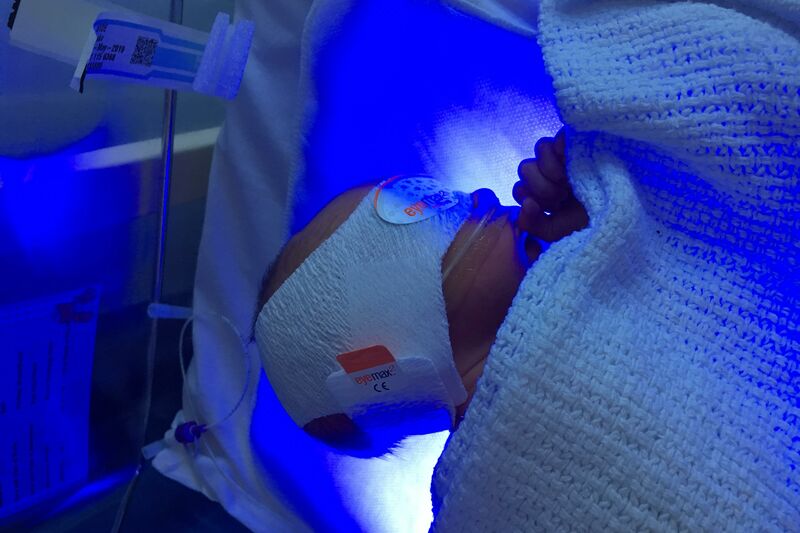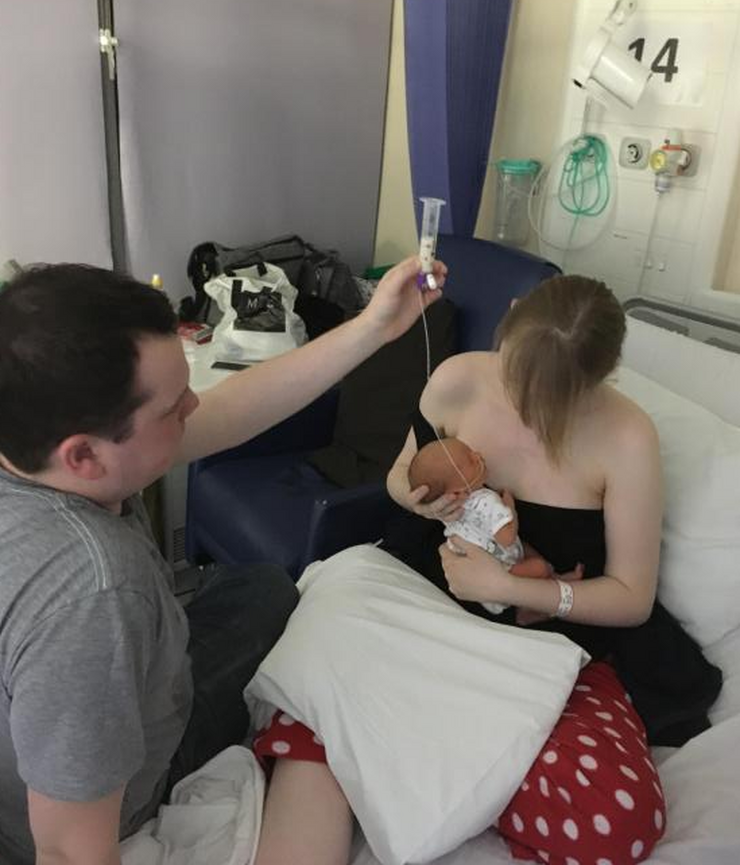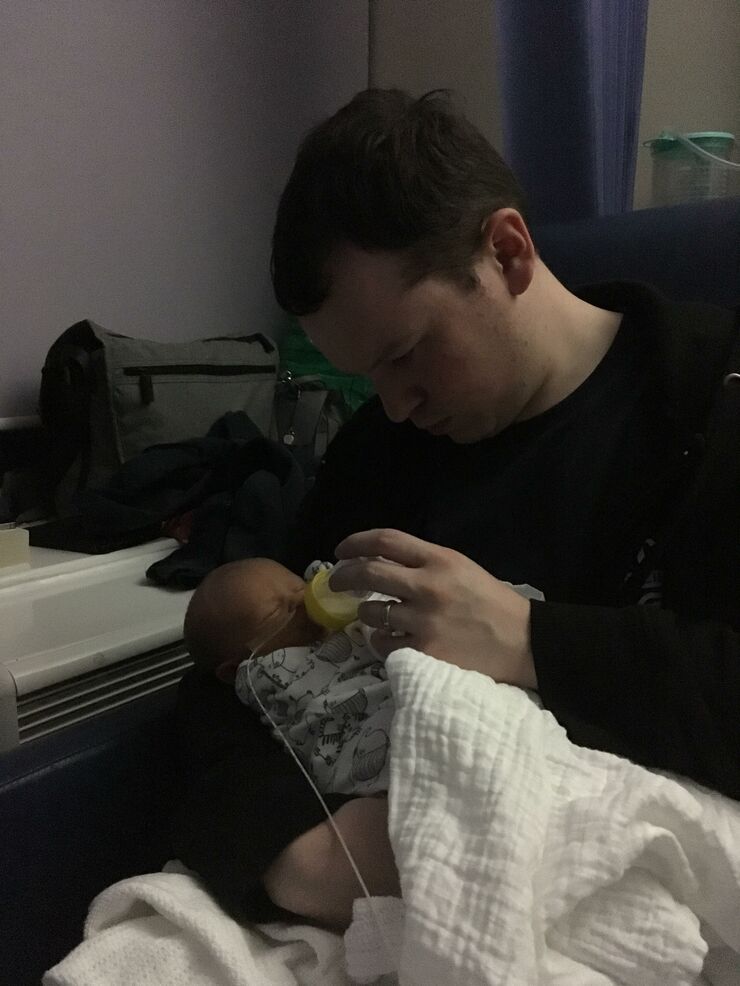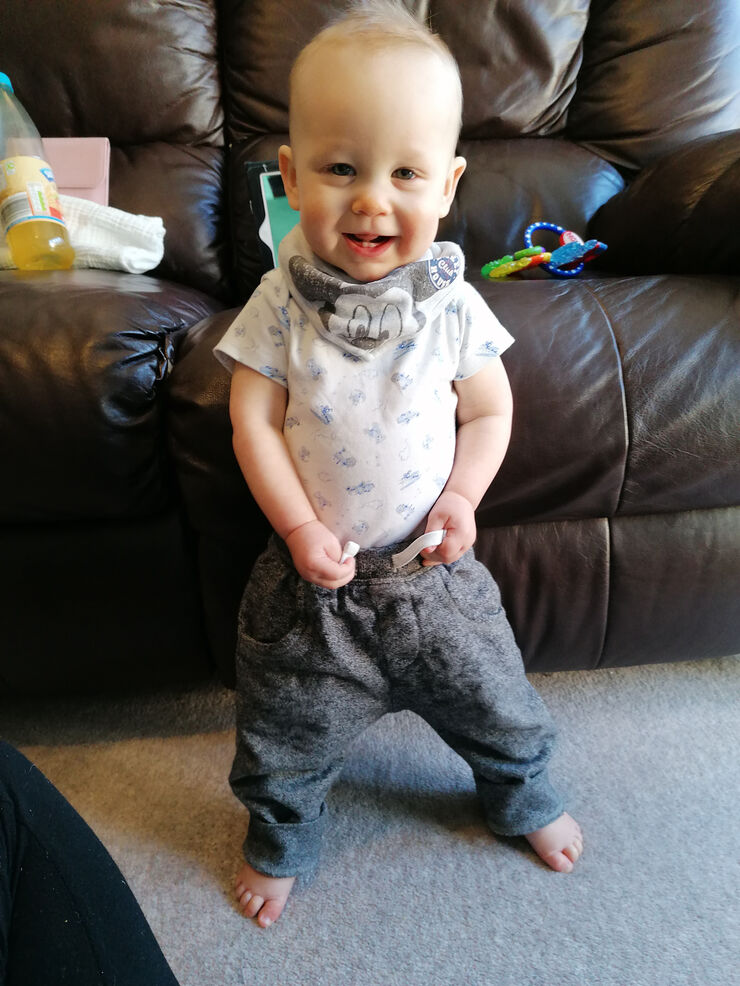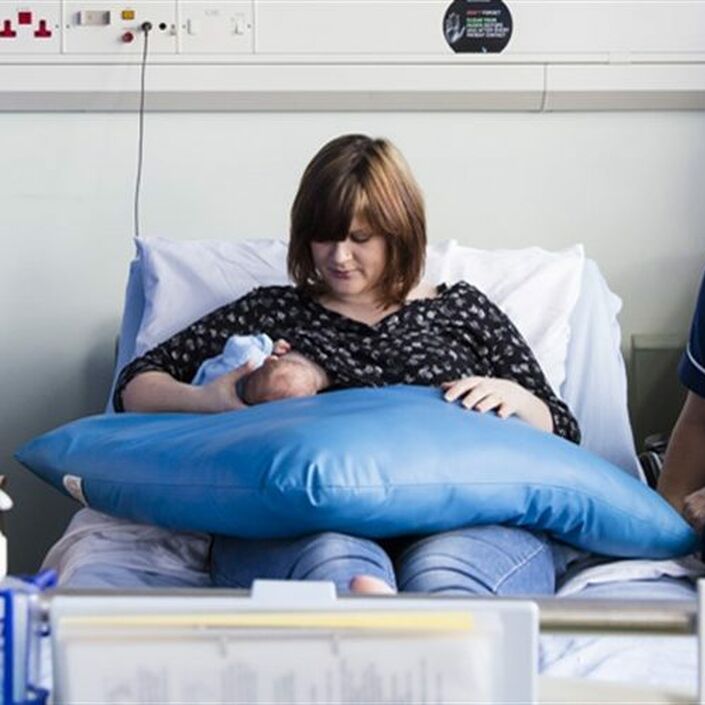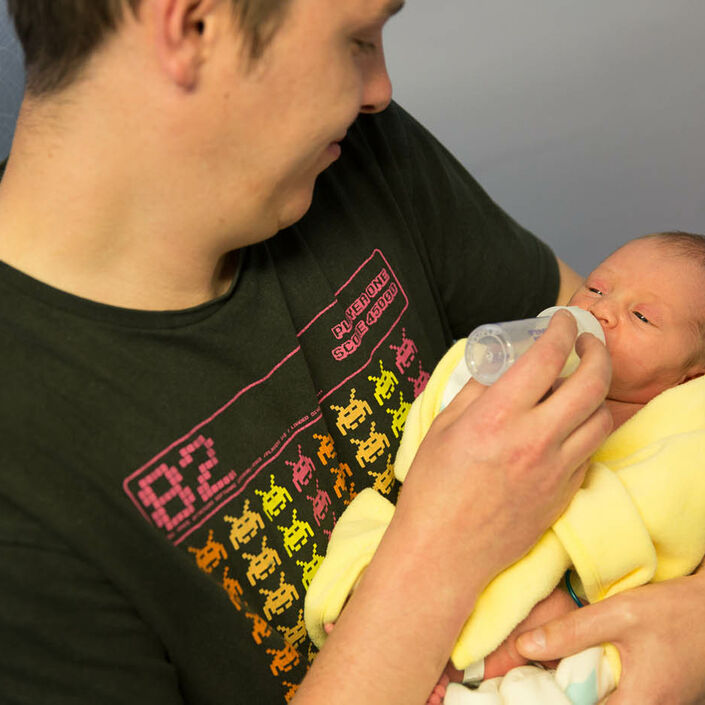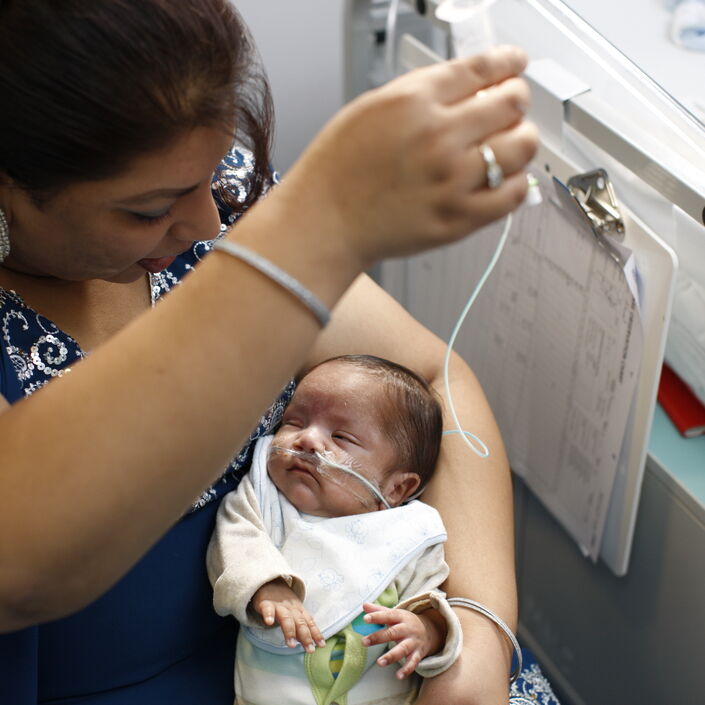We were unaware just how common premature birth was until it happened to us. I was exactly 35 weeks pregnant with our first child when my waters broke and two days later, our son, Drake, was born.
Although five weeks early, he was a good weight, at 5lbs 12oz, and when he was checked over by a neonatal doctor, they were happy with his condition. And because our hospital had a “transitional care” ward, where we could stay with Drake and receive a bit more attention than the regular postnatal ward, he didn’t need to go into the NICU.
For his first feed, he was put on my chest, but he seemingly had no motivation to try to breastfeed. After 12 hours of Drake not showing any desire to feed himself, the executive decision was made to begin tube feeding. It was very upsetting to watch a tube being inserted down our tiny baby’s nose.
Drake started looking yellow and was having to have blood tests every four hours. His poor heels were looking mashed and scabbed from the continual blood tests but he hardly complained at the tube and the heel pricks; he just seemed to get on with it.
